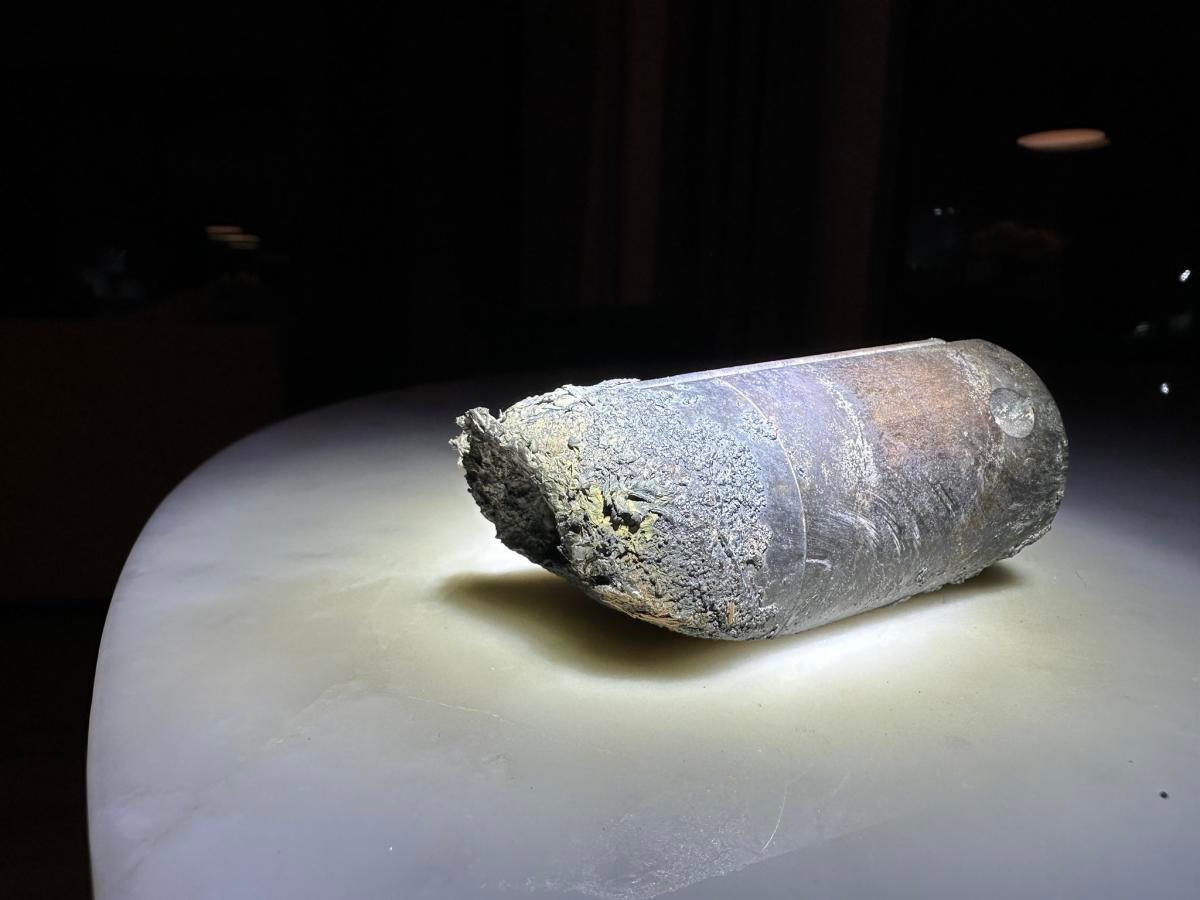
On March 8, a bit of house particles plunged by way of a roof in Naples, FL, ripped by way of two flooring and (luckily) missed the son of house owner Alejandro Otero. On Tuesday, NASA confirmed the outcomes of its evaluation of the incident. As suspected, it’s a bit of kit dumped from the International Space Station (ISS) three years in the past.
NASA’s investigation of the item at Kennedy Area Heart in Cape Canaveral confirmed it was a bit of the EP-9 assist tools used to mount batteries onto a cargo pallet, which the ISS’ robotic arm dropped on March 11, 2021. The haul, made up of discarded nickel-hydrogen batteries, was anticipated to orbit Earth between two to 4 years (it cut up the distinction, lasting nearly precisely three) “earlier than burning up harmlessly within the ambiance,” as NASA predicted on the time. Not fairly.
The roof-piercing particles was described as a stanchion from NASA flight assist tools used to mount the batteries onto the cargo pallet. Fabricated from the steel alloy Inconel, the item weighs 1.6 lbs and measures 4 inches tall and 1.6 inches in diameter.
Whats up. Appears to be like like a type of items missed Ft Myers and landed in my home in Naples.
Tore by way of the roof and went through 2 flooring. Virtually his my son.
Are you able to please help with getting NASA to attach with me? I’ve left messages and emails and not using a response. pic.twitter.com/Yi29f3EwyV— Alejandro Otero (@Alejandro0tero) March 15, 2024
Otero told Fort Meyers CBS affiliate WINK-TV that he was on trip when his son advised him that an object had pierced their roof. “I used to be shaking,” he stated. “I used to be utterly in disbelief. What are the probabilities of one thing touchdown on my home with such power to trigger a lot injury. I’m tremendous grateful that no person acquired damage.”
NASA says it should examine the tools dump’s jettison and re-entry to attempt to determine why the item slammed into Otero’s residence as an alternative of disintegrating into flames. “NASA specialists use engineering fashions to estimate how objects warmth up and break aside throughout atmospheric re-entry,” the house company defined in a information launch. “These fashions require detailed enter parameters and are commonly up to date when particles is discovered to have survived atmospheric re-entry to the bottom.”
Most house junk strikes extraordinarily quick, reaching as much as 18,000 mph, according to NASA. It explains, “Because of the fee of pace and quantity of particles in LEO, present and future space-based providers, explorations, and operations pose a security threat to individuals and property in house and on Earth.”
Trending Merchandise

















